1 Commitment to Students and Student Learning
Classroom Management
Whenever I encounter a behaviour that challenges me, I have created by own version of an ABC Charts. The link above illustrates an example of me analyzing behaviour of children with Special Needs that I worked 1:1 with at the Boys and Girls’ Club in the summer of 2023. In the chart you can see me analyzing the behaviour of a child who choked me and dunked my head underwater in the swimming pool. Because I analyzed his behaviour in this chart, I realized that before the behaviour, the child saw people being dunked underwater in the dunking tank at the water carnival. He really wanted to either be dunked underwater or dunk me in the water. At one point, he said to me “I’m going to do that to you.” This showed that although I thought the function of this behaviour was for attention (as this is a common function of this child’s behaviour), he also may have wanted a tangible outcome. I enjoy working with children who need the most love and patience in my community. I also enjoy working with children who have behavioural needs because I love trying to find the function and analyzing it.
An example of me analyzing the behaviour of students in the classroom is during my Block C practicum where I wrote student observations. In the observations, I discuss a student who I saw as an eloquent writer and with high mathematical reasoning, he had trouble understanding why I would not call on him all the time when his hand was raised. When I tried explaining this reasoning to him, he cried or said that I hated him. This exercise showed me that although his math and language abilities were sound, he may need to work on his problem-solving abilities. I thought of ways to help support his problem-solving or perspective-taking skills. Privately, I acted out a social script of me teaching and how many students had their hands raised. We wrote down all the choices that I could make. This helped him see why I did not always call on him to answer my questions to the class. I also started doing more “Think-Pair-Shares” so that the student had more opportunities to share his answers with another student in the class.
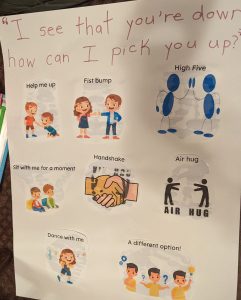
To help create a positive learning environment in my classrooms at practicums, I have facilitated morning meetings, spent time with my students at recesses/lunches, and played co-operative games in Gym. For example, in each of my practicums I have played a game in Gym called “A Little Help from my Friends.” In this game, two students are assigned the role of being “it.” Their job is to tag the other students in the game. When students are tagged, they sit down. Two other students are assigned the role of being “the helper”. The person who is “it” cannot tag the helper. The helper’s role is to put the students who are tagged/sitting down back in the game by saying to them “I see that you’re down, how can I pick you back up?” The student who is down chooses an option (seen on the photo above) on how to help them back up/back in the game.
Diversity and Inclusion
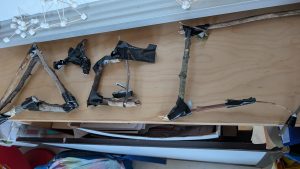
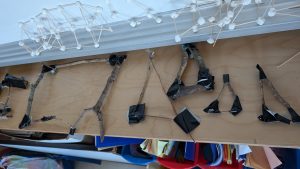
It is important to support linguistically and culturally diverse students in your classroom. For example, in this lesson, I explore indigenous ways of knowing when teaching students about 3D/2D shapes in my Block C practicum. In the lesson, I taught my SK/1 students what it means when people say we are “on turtle island.” I then read my students a book about learning from the land (by an Indigenous author.) Then, we transitioned into using pieces of the land (like sticks, pinecones, leaves that I found outside) and tape to create shapes that we have learned about in class (examples can be seen on the photos above.)
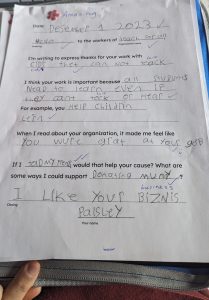
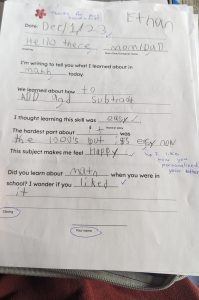
It is also important to assess and respond to the specific needs of students. For example, in my Block A practicum I was teaching 3/4 students about personal letter writing. I had students with a vast range in reading/writing levels. We had 2 students who were modified in Language and for this exercise my fill-in-the-blank letters for them required them to just write one word per sentence. For the students without modifications, I had students choose between two options: they could read about a not-for-profit and then fill-in-the-blanks to write a letter about it or write a fill-in-the-blank letter about something they learned about in class. The first option required students to read an article and I used AI to put each article at roughly a kindergarten reading level to a grade four reading level. The other option gave students the option to write about something they already had prior knowledge about, did not need to read about it first, and that happened recently. Above, you can see two different letters from students who chose two different options. Overall, the exercise was successful because students could write about something that interested them the most. Upon reflection, I noticed some students still had trouble knowing where to place each piece of information. For example, one student put the date in the conclusion. When these students did the activity the next day, I gave students a graphic organizer where I colour-coded each section of the personal letter. If I highlighted the date section of the graphic organizer as pink, I would highlight pink where the date goes in the fill-in-the-blank personal letter. This accommodation seemed to be effective for students who had trouble ordering the letter.
Media Attributions
- PXL_20231126_002728584.MP~2
- PXL_20241203_202346887.MP
- PXL_20241203_202343246.MP
- PXL_20231202_173138300.MP
- PXL_20231202_173338544.MP
